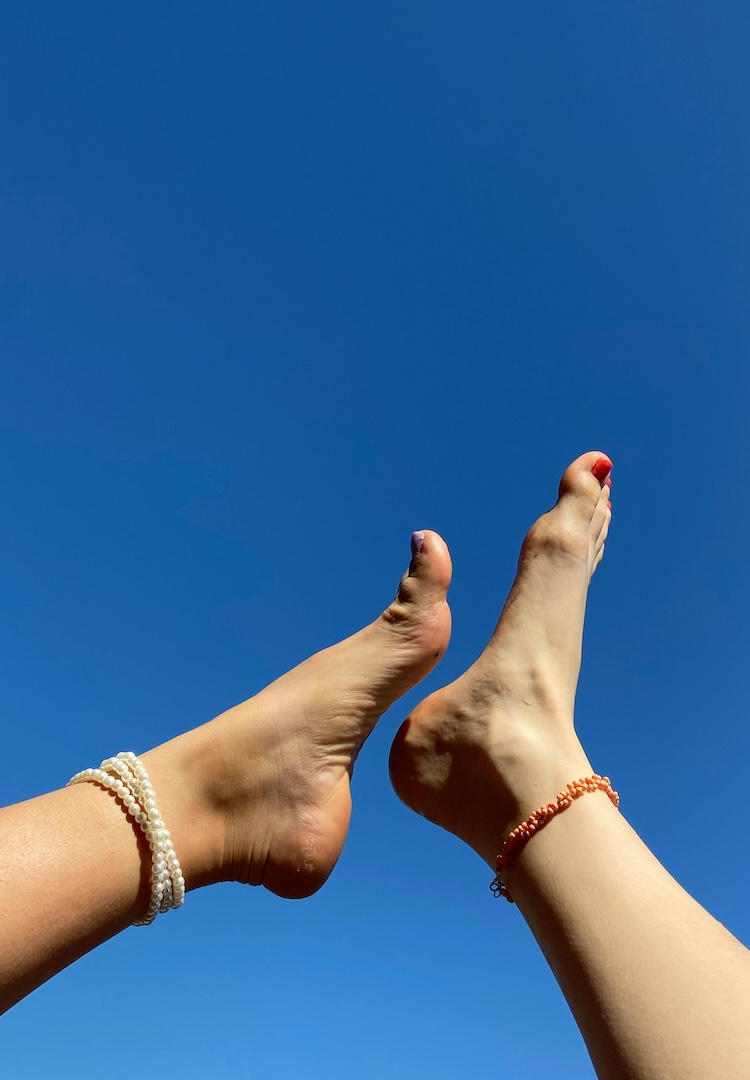Is it possible to orgasm without being touched?
Words by Rosemarie Hollis
Go hands-free.
In the year of 2010, Lady Gaga announced to the world that she could give herself mental orgasms. Because in 2010 the world couldn’t handle having a frank and open conversation about sex (least of all with a powerful, famous woman), the news was met mostly with amusement. “She ‘claims’ she can give herself a mental orgasm” read most of the press, with a sort of implied side-eye as if to say, “Sure you can”.
But cut to 2023, and the story has stuck with me – as has the idea of having orgasms without genital stimulation. These days, we even have fitness influencers telling us that they can orgasm during exercise. Which got me wondering – how does orgasm without genital stimulation work? Is it common? And how can we go about incorporating it into our own sex lives?
Interested to hear how others navigate the world? Head to our Life section.
To answer some of these questions, I reached out to certified sex coach, Georgia Grace. She first reassured me that the press of 2010 had (shock horror) gotten it wrong and orgasms without genital stimulation, even mental orgasms, were definitely a thing. We delved into the idea of orgasming during exercise.
Georgia explained to experience a “coregasm” during exercise, a person could be engaging their pelvic floor or their legs could be rubbing in such a way that it causes stimulation. She said it can often occur during Pilates-type exercises or during high-intensity training such as running, jogging or using the cross-trainer.
“Ultimately, many people have experienced this coregasm,” she said. “We don’t always know how it happens but when you think about it, a lot of what you’re doing when you’re exercising is pretty close to what you’re doing when you’re having sex: you’re engaging your pelvic floor, there might be a bit of high intensity, you’re focused on your body.”
I asked if this kind of orgasm feels different, given it seems to be more connected to the body’s reaction to a stimulus or physical movement, rather than sexual arousal. “Orgasms are so subjective. We can never be like, ‘Oh this is a six on the scale of all human orgasms ever experienced’. Every time you climax is different, every context is completely different… so it’s really impossible to say.”
Georgia explained some people say it feels more just like a “build-up and a release”. I move on to the idea of mental orgasms, à la Lady Gaga in 2010. Georgia said this is about thinking your way to orgasm without touching yourself. Although, often people need physical stimulation at the end to reach climax.
Georgia pointed out that some people require thought stimulus to feel arousal before engaging in physical sex. For some, this means fixating on a particular point of arousal and following it to the conclusion of an orgasm.
Orgasms without genital stimulation could be something that people who have experienced sexual trauma or who struggle with body dysmorphia might want to explore. It can be a safe way to still experience pleasure, without having to navigate the potential triggers of physical touch.
“As with all things,” Georgia explained. “The more we practise, the more we do, the more we explore, then the more we’ll be able to build.” For orgasming through exercise, she recommended anything linked to Pilates, or things that engage the core like leg lowers or planks.
“You want to be engaging your pelvic floor – so squeezing it as if you were trying to stop a wee mid-stream and then it’s just as important to release it. You want to pair movement with more of the mechanical engagement of your pelvic floor.” If you’re wanting to explore fantasy orgasms, Georgia said to first establish what your fantasies are.
“If you have no idea, you can maybe listen to some audio erotica, read some books, or even just think about some positive sexual experiences you’ve had and build… on that. Watching movies [and] porn, of course, can be a great way to build that fantasy repertoire.”
From there, Georgia recommended setting aside some time and allowing your mind to wander without restraint. She said to remain conscious of what happens within our body as the arousal builds. “We need to bring our awareness to our body as we’re doing it and not stay too cognitive,” she explained.
So with all this talk of mental orgasms, I had to ask – what about orgasming while we sleep? Wet dreams are something we normally equate to teenage boys, but I have to admit, there have been times I’ve woken up and thought, ‘Did I just have an orgasm through that sex dream?’
“Often we only talk about wet dreams from the puberty perspective, but it is incredibly common!” Georgia told me. “It could be an arousing fantasy, it could be stimulation from bedding… all people can have a dream orgasm without even consciously knowing that they’re building arousal in their body.”
Georgia explained it can be quite confronting and even disturbing, especially if the sex dream is connected to someone you have no IRL physical or sexual attraction to. She explained the concept of ‘arousal non-concordance’.
“Essentially, this means your body responds to stimuli in unexpected ways. Sometimes we feel sensations and it doesn’t mean we’re consenting or wanting that sexual experience.” She reminded me of the importance of “being conscious of the fact that it happens, it’s normal, [and] it doesn’t say anything about you or your sexuality.”
But in terms of making sex dreams a regular thing, on purpose? “That might be something for a dream specialist,” Georgia said. “I think it’s a bit beyond our control. Maybe setting intentions before you sleep, or thinking about sex before falling asleep.”
For more on orgasming without touch, head here.













